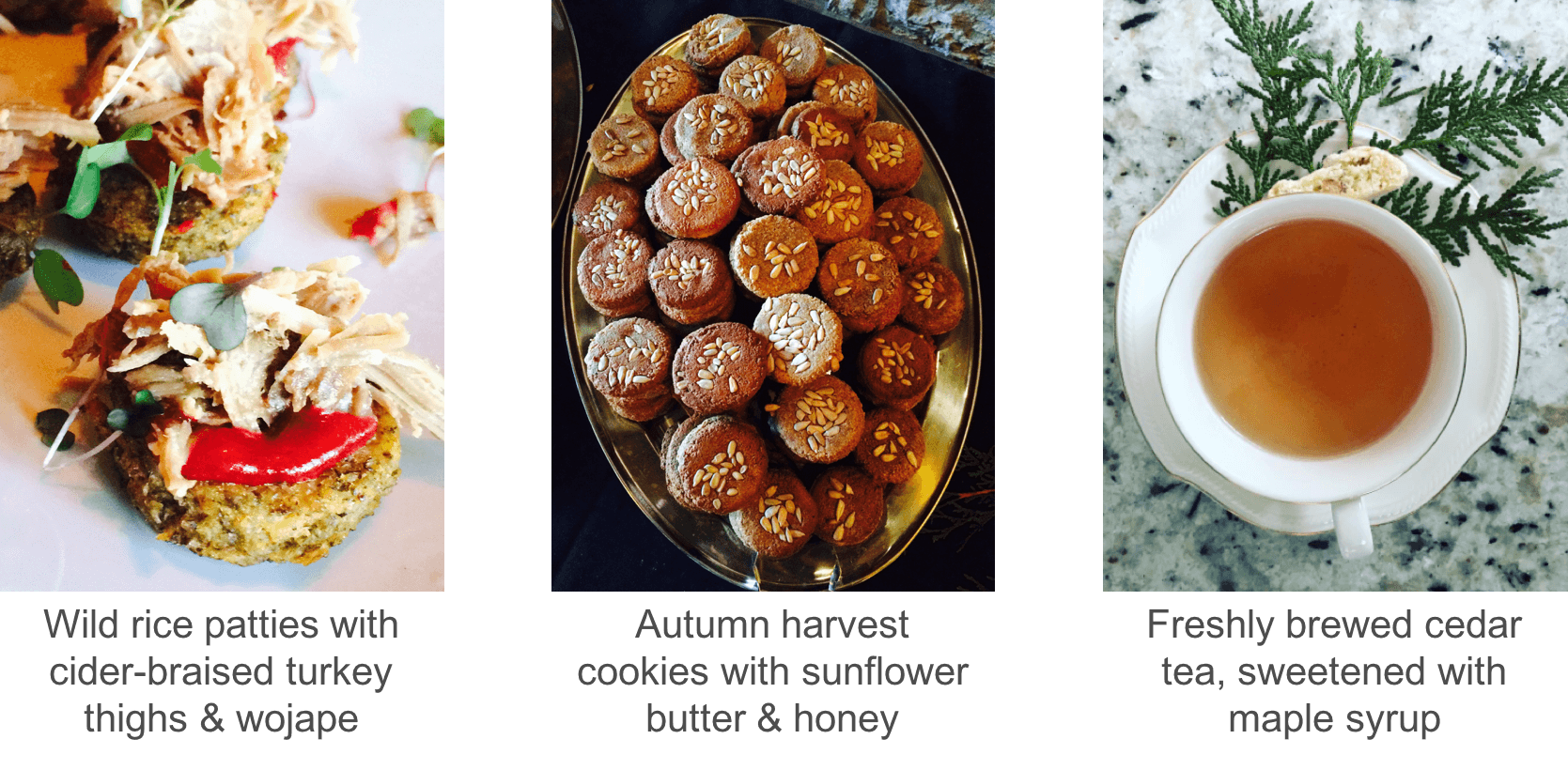Indigenous Cuisine: As Local As It Gets
This past month, I made my way to Southeast Minneapolis for a cookbook launch party featuring a type of cuisine few of us in the food industry have heard of: indigenous. Using ingredients that are strictly native to the United States–particularly the Midwest–guests feasted on fare featured in Chef Sean Sherman’s new cookbook, The Sioux Chef’s Indigenous Kitchen.

The best way to describe indigenous cuisine is deliciously unassuming and delightfully earthy. It provides a modern take on indigenous staples like cedar-braised game meat, wild greens, crushed juniper, maple vinegar and smoked whitefish.
WHY IT’S HAPPENING
Sherman (Oglala Lakota), born in Pine Ridge, SD, has been a culinary force in the Midwest for nearly thirty years. But recently, Sherman’s main focus has been revitalizing indigenous food systems in the world by showcasing Native American cuisine and, in the process, bringing attention to key social and cultural issues faced by indigenous communities.
As Sherman explains in his book, many of the ingredients we grow and harvest today didn’t originate on U.S. soil. Modern dietary staples like wheat flour, dairy products, sugar, and domestic pork and beef are all European fare brought to this country through exploration and trade between the 15th and 17th centuries. Instead of using these ingredients in his book, Sherman reconnects readers to the ingredients native communities harvested, prepared and feasted upon for centuries before European settlers arrived.
In an age where sourcing has become an important criteria for savvy food consumers, indigenous cuisine is as local as it gets.
WHAT WE THINK
The benefits of indigenous cooking make a strong case for it becoming a long-range culinary food trend.
As Sherman puts it, indigenous fare is hyper-local, seasonal and ultra-healthy: no sugar, no wheat (or gluten), no dairy, high in protein and a focus on plant-based ingredients. Sherman is right in asking why the original indigenous diet isn’t taking off in our modern food culture, knowing our collective focus on real, wholesome ingredients without preservatives and additives, and minimal processing.
WHAT’S NEXT
While indigenous cuisine has many of the attributes chefs and consumers are seeking today in their food and beverage choices, it also faces two fairly significant obstacles in the short term:
Ingredient Accessibility
Believe it or not, many of the ingredients that are native to this part of the country are not easily found within mainstream food channels, such as sunchokes, purslane, duck eggs and maple vinegar. Unless you’re willing to forage backyards and riverbeds, even Sherman acknowledges some of the key components must be sourced through specialty stores or online.
Consumer Familiarity
Many of the staples of indigenous cuisine aren’t currently foods consumers are regularly preparing and eating. For example, the three most popular types of animal protein in the U.S. today–chicken, beef and pork–are all replaced by lesser-known fare like bison, rabbit, duck and venison. To achieve mainstream adoption, indigenous cuisine will likely need to follow the path of other global food trends: marrying familiar and new ingredients to entice curious, yet hesitant, customers into trying it.
The Opportunity
Despite its obvious challenges, indigenous cuisine also has an exciting opportunity to redefine “American” food. Different geographies could craft nuanced variations of indigenous cuisine based on regional plant and wildlife varieties. The development and promotion of this regional indigenous fare could give us a whole new category of cuisine to explore.
In the meantime, I’ll be eagerly awaiting the arrival of Sherman’s new Minneapolis restaurant, slated to open in Spring 2019.
Just some Thought for Food™
